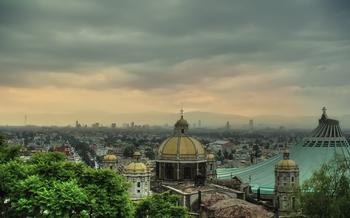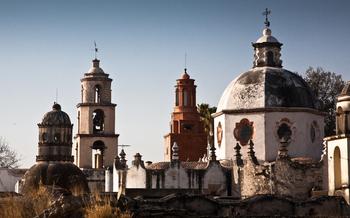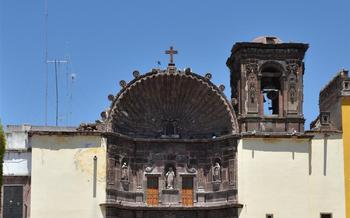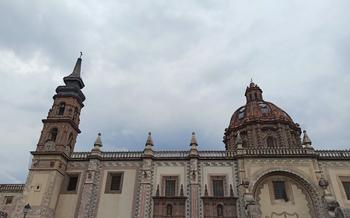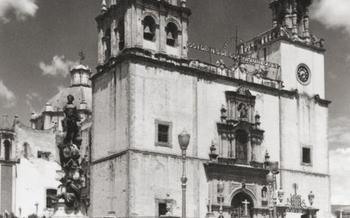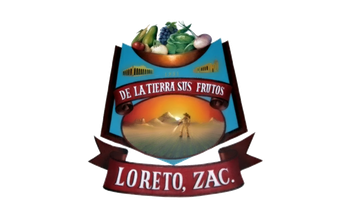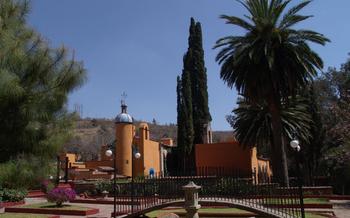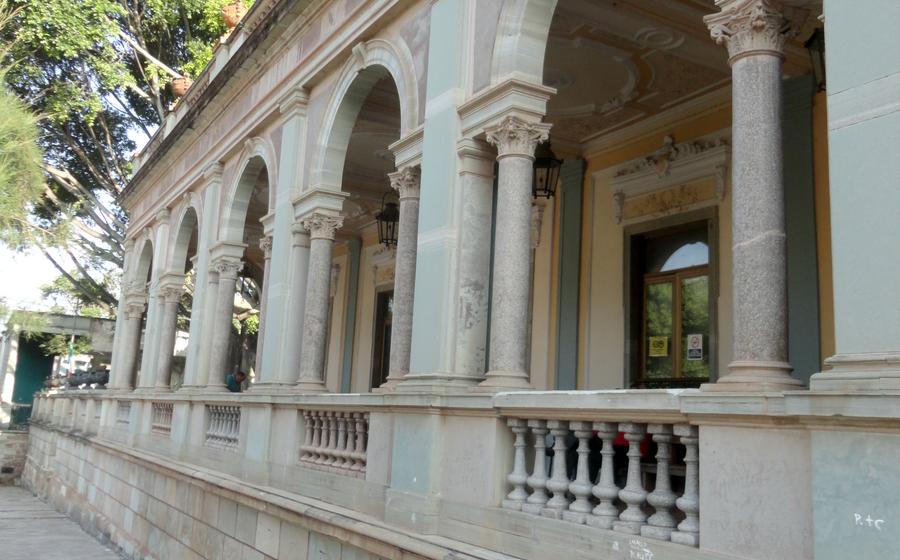
Cerro del Cubilete and the Christ the King Monument (Cristo Rey)
- Cerro del Cubilete and Cristo Rey Monument Overview:
- Historical Significance of Cerro del Cubilete
- Architectural Marvel: Cristo Rey Monument
- Symbolism of Cristo Rey
- Panoramic Views from Cerro del Cubilete
- The Sanctuary of Cristo Rey: A Sacred Haven for Pilgrims and Visitors
- Pilgrimage to Cerro del Cubilete
- Religious Celebrations and Festivals
- Monument's Strategic Location
- Local Legends and Folklore
- Visiting the Monument's Interior:
- Tips for a Memorable Visit:
- Additional Activities in the Area
- A Touch of Mystery: Unraveling the Hidden Chamber
Cerro del Cubilete and Cristo Rey Monument Overview:
The majestic Cerro del Cubilete, rising 2,600 meters above sea level, holds a sacred place in the heart of Mexico. Its historical significance dates back to pre-Columbian times, as it was revered by indigenous groups as a sacred site. During the Cristero War, a bloody religious conflict that ravaged Mexico in the 1920s, the hill became a symbol of resistance against government persecution of the Catholic Church. In 1923, amidst the turmoil of war, the idea of erecting a monument to Christ the King on Cerro del Cubilete was born. The monument, a colossal masterpiece of faith and devotion, was completed in 1950 and stands as a testament to the enduring spirit of the Mexican people.
Historical Significance of Cerro del Cubilete
Cerro del Cubilete holds a profound historical significance that intertwines with the cultural and religious tapestry of Mexico. For indigenous groups, the hill was revered as a sacred site, imbued with spiritual energy and a deep connection to their ancestral traditions. The hill's prominence as a pilgrimage destination can be traced back to the 17th century when it was believed to be the site of a miraculous apparition of the Virgin Mary.
During the tumultuous period of the Mexican Cristero War (1926-1929), Cerro del Cubilete became a symbol of resistance and faith for the Cristeros, who fought to defend their religious freedom against government oppression. The construction of the Cristo Rey Monument in 1944 served as a tribute to the martyrs of the Cristero War and a testament to the enduring spirit of the Mexican people.
Architectural Marvel: Cristo Rey Monument
The Cristo Rey Monument stands as a testament to architectural prowess and religious devotion. Its design is a blend of Art Deco and Neo-Gothic styles, resulting in a distinctive and awe-inspiring structure. The monument's exterior is adorned with intricate carvings, sculptures, and bas-reliefs that depict scenes from the life of Christ and the history of Mexico. The monument's interior is equally impressive, featuring a grand altar, stained glass windows, and a series of murals depicting religious and historical events. The use of marble, onyx, and other precious materials adds to the monument's grandeur, creating a space that is both sacred and majestic.
Symbolism of Cristo Rey
The Cristo Rey Monument holds profound religious and cultural significance in Mexico. As a symbol of faith and devotion, it represents the deep-rooted Catholic beliefs of the Mexican people. The monument's outstretched arms embrace the nation, offering a sense of comfort, protection, and spiritual guidance.
Beyond its religious significance, the Cristo Rey Monument has become an iconic symbol of Mexican identity. It stands as a testament to the country's rich history, resilience, and cultural heritage. The monument's presence in the heart of Mexico serves as a reminder of the nation's enduring values and traditions, fostering a sense of unity and national pride among its citizens.
Panoramic Views from Cerro del Cubilete
The journey to the summit of Cerro del Cubilete is rewarded with breathtaking panoramic views that stretch for miles in every direction. The hilltop offers a unique perspective, allowing visitors to gaze upon a vast tapestry of landscapes and landmarks. The city of Silao, with its vibrant urban sprawl, lies nestled at the foot of the hill, while the majestic Sierra de Guanajuato mountain range forms a dramatic backdrop to the north. On a clear day, one can even catch a glimpse of the distant peaks of the Nevado de Toluca volcano, towering over the horizon like a sleeping giant. The panoramic vista from Cerro del Cubilete is a feast for the eyes, inviting visitors to immerse themselves in the natural beauty and geographical wonders that surround this sacred site.
The Sanctuary of Cristo Rey: A Sacred Haven for Pilgrims and Visitors
Nestled at the foot of the Cristo Rey Monument, the Sanctuary of Cristo Rey stands as a testament to the enduring faith and devotion that have shaped Mexico's religious landscape. This sacred complex encompasses a beautiful church, a pilgrim's hostel, and various facilities that cater to the needs of pilgrims and visitors seeking spiritual solace and connection.
The church, with its elegant architecture and serene ambiance, serves as the heart of the sanctuary. Its intricate stained-glass windows depict scenes from the life of Christ, casting a warm glow upon the interior. The altar, adorned with intricate carvings and religious artifacts, exudes an aura of reverence and devotion.
The pilgrim's hostel provides weary travelers with a place to rest and recharge, offering basic accommodations and a sense of community among fellow pilgrims. The sanctuary also features a gift shop where visitors can purchase religious souvenirs and mementos to commemorate their pilgrimage.
Beyond its religious significance, the Sanctuary of Cristo Rey also holds cultural and historical value. It represents the resilience of the Mexican people and their unwavering faith in the face of adversity. The sanctuary has become a symbol of hope and unity, drawing pilgrims from across the country and beyond.
Pilgrimage to Cerro del Cubilete
Cerro del Cubilete holds a profound significance as a pilgrimage site, drawing countless devotees from across Mexico and beyond. Pilgrims embark on this spiritual journey to pay homage to Cristo Rey, seeking blessings, expressing gratitude, or fulfilling personal vows. The pilgrimage experience is deeply rooted in faith and devotion, offering a unique opportunity for spiritual reflection and renewal.
During the pilgrimage, participants engage in various religious rituals and processions, creating a sense of unity and camaraderie among fellow believers. The ascent to the hilltop is often accompanied by prayers, hymns, and the carrying of religious symbols, reflecting the pilgrims' commitment and dedication.
Upon reaching the sanctuary, pilgrims gather for mass, light candles, and offer prayers at the altar of Cristo Rey. The presence of the monumental statue evokes a sense of awe and reverence, inspiring pilgrims to seek divine guidance and strength.
The pilgrimage to Cerro del Cubilete is not merely a religious event but also a cultural and social phenomenon. It fosters a sense of community and belonging, bringing together people from diverse backgrounds who share a common faith. The pilgrimage experience leaves a lasting impact on participants, deepening their connection to their beliefs and providing a profound sense of spiritual fulfillment.
Religious Celebrations and Festivals
Cerro del Cubilete is a site of great religious significance, and throughout the year, it hosts various celebrations and festivals that draw thousands of pilgrims and visitors. One of the most important events is the annual pilgrimage to the Sanctuary of Cristo Rey, which takes place on the last Sunday of November. During this pilgrimage, thousands of faithful undertake a journey to the hilltop, often on foot, to pay homage to the Cristo Rey monument and seek blessings. The pilgrimage is a deeply spiritual experience, marked by processions, prayers, and religious rituals.
Other notable celebrations include the Feast of Christ the King, held on the last Sunday of October, and the Feast of Our Lady of Guadalupe, celebrated on December 12th. These events are characterized by colorful processions, traditional dances, and music performances, showcasing the vibrant cultural heritage of the region. Participating in these celebrations offers a unique opportunity to immerse oneself in the spiritual and cultural traditions of Mexico.
Monument's Strategic Location
Cerro del Cubilete stands as a beacon of faith and devotion, strategically positioned to command attention from afar. Its prominent location allows the Cristo Rey Monument to be visible from various vantage points, including Mexico City, the Bajío region, and even parts of the neighboring states. This strategic placement enhances the monument's symbolic significance, making it a landmark that represents the deep-rooted faith of the Mexican people.
Local Legends and Folklore
Cerro del Cubilete is steeped in local legends and folklore, adding to its mystical allure. One captivating tale revolves around the hill's name. Legend has it that a giant named Cubilete once roamed the land, leaving behind his enormous footprints, which eventually formed the hill's distinctive shape.
Another legend speaks of a hidden treasure buried beneath the hill. According to local lore, a wealthy landowner concealed his vast fortune somewhere on Cerro del Cubilete, leaving behind cryptic clues to guide treasure seekers. Many have embarked on quests to uncover the hidden riches, but none have succeeded, further fueling the mystique of the hill.
These legends and stories have been passed down through generations, intertwining with the history and significance of Cerro del Cubilete, creating a rich tapestry of cultural heritage that captivates visitors and fuels their imaginations.
Visiting the Monument's Interior:
Stepping inside the majestic Cristo Rey Monument is a journey into the heart of faith and devotion. The interior of the monument exudes an aura of serenity and spirituality, inviting visitors to immerse themselves in its religious symbolism. The altar, adorned with intricate carvings and shimmering gold accents, is a focal point of the monument's interior. Here, visitors can pay homage to the sacred figure of Christ the King and offer prayers for guidance and blessings.
Throughout the monument, religious artifacts and symbolic elements are carefully placed, each holding a unique significance. From the stained-glass windows depicting scenes from the Bible to the intricate mosaics adorning the walls, every detail is a testament to the monument's rich history and religious significance. Visitors are encouraged to take a moment to explore these elements and reflect on the deeper meaning behind them.
Tips for a Memorable Visit:
To make the most of your pilgrimage to Cerro del Cubilete, consider these practical tips:
-
Dress appropriately: Wear comfortable shoes for the climb and clothing that is respectful of the religious nature of the site.
-
Safety first: The climb to the monument involves some steep sections, so take your time and be mindful of your footing.
-
Accessibility: The monument is wheelchair accessible, but the climb to the top can be challenging for those with limited mobility. Consider using the elevator for a more comfortable experience.
-
Capture the moment: Bring your camera to capture the breathtaking views and the grandeur of the monument.
-
Embrace the local culture: Immerse yourself in the local culture by trying traditional Mexican cuisine and interacting with the friendly locals.
Additional Activities in the Area
Beyond the spiritual and historical significance of Cerro del Cubilete, the surrounding region offers a wealth of additional attractions to enhance your visit. The nearby city of Guanajuato, a UNESCO World Heritage Site, boasts a rich cultural heritage and vibrant urban charm. Stroll through its colorful streets, visit the iconic Teatro Juárez, and immerse yourself in the city's lively arts scene.
For those seeking a deeper religious experience, the Sanctuary of Atotonilco, located just a short drive from Cerro del Cubilete, is a must-visit. This 18th-century sanctuary houses a stunning collection of religious paintings and murals, offering a glimpse into Mexico's colonial past and artistic traditions.
Indulge in the region's culinary delights by sampling the local cuisine. Guanajuato is renowned for its traditional dishes such as "enchiladas mineras" and "mole poblano," a rich and flavorful sauce served with chicken or turkey. Savor these culinary creations at local restaurants or food markets to fully experience the region's gastronomic heritage.
As you explore the area, take time to connect with the warmth and hospitality of the local people. Their stories, traditions, and customs will provide a deeper understanding of the region's unique identity. Embrace the vibrant spirit of Mexico by engaging with its people and immersing yourself in the local culture.
A Touch of Mystery: Unraveling the Hidden Chamber
Concealed within the depths of the Cristo Rey Monument lies a hidden chamber, a secret alcove that few visitors are aware of. This enigmatic space, known only to a select few, is said to house a collection of precious artifacts and documents that chronicle the history of the monument and the surrounding region. While the contents of the chamber remain shrouded in mystery, its existence adds an air of intrigue and invites visitors to delve deeper into the rich tapestry of stories that Cerro del Cubilete holds.

